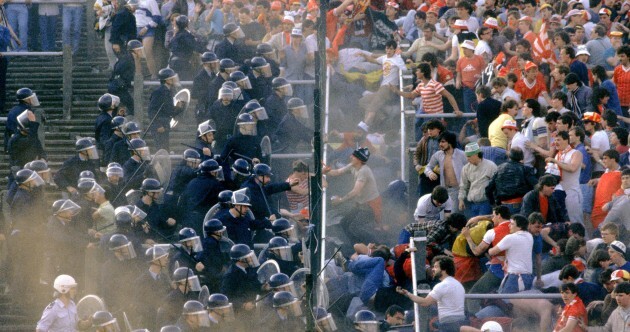The Heysel Stadium Disaster: A Tragic Day in Football History

Introduction
The Heysel Stadium disaster, which occurred on 29 May 1985, remains one of the deadliest tragedies in football history. This catastrophic event took place during the European Cup final between Juventus and Liverpool in Brussels, Belgium, and resulted in the loss of 39 lives and injuries to over 600 others. The implications of this disaster went beyond the immediate loss, raising significant concerns over crowd control and stadium safety in the world of sports.
The Incident
As hordes of Liverpool fans arrived at the stadium, many were confronted with poorly managed security and inadequate segregation between rival supporters. A total of 60,000 fans were packed into the stadium, creating a chaotic atmosphere. Tensions boiled over, leading to a breach in a wall that separated the two groups. Juventus fans were trapped in a corner, and as Liverpool supporters surged towards them, panic ensued. The wall collapsed under the weight of the crowd, resulting in crushing injuries for many.
Casualties and Response
In the aftermath, officials struggled to manage the unfolding disaster. Emergency services responded, but the scale of the incident overwhelmed their efforts. The final death toll was 39, the majority of whom were Italian fans. The incident also left a profound impact on families and communities, especially in Italy, where mourning ensued deeply.
Investigations and Long-Term Consequences
The Heysel tragedy prompted investigations into the safety standards of football stadiums across Europe. UEFA (the governing body for European football) imposed strict sanctions on English clubs, banning them from European competitions for five years. This led to significant reforms in stadium renovation and safety measures across the continent. Fans’ experiences at matches were re-evaluated in terms of crowd control, seating arrangements, and emergency access.
Conclusion
The Heysel Stadium disaster serves as a somber reminder of the importance of safety in sporting events. The scars of that day still linger in the consciousness of football supporters and continue to influence policies governing crowd management. As we reflect on this tragedy, it is essential to honour the victims and advocate for measures that prevent such calamities in the future. The hope is that lessons learned from Heysel lead to safer environments, not only in football stadiums but across all public venues, ensuring that the enjoyment of sport is not overshadowed by the spectre of tragedy.









